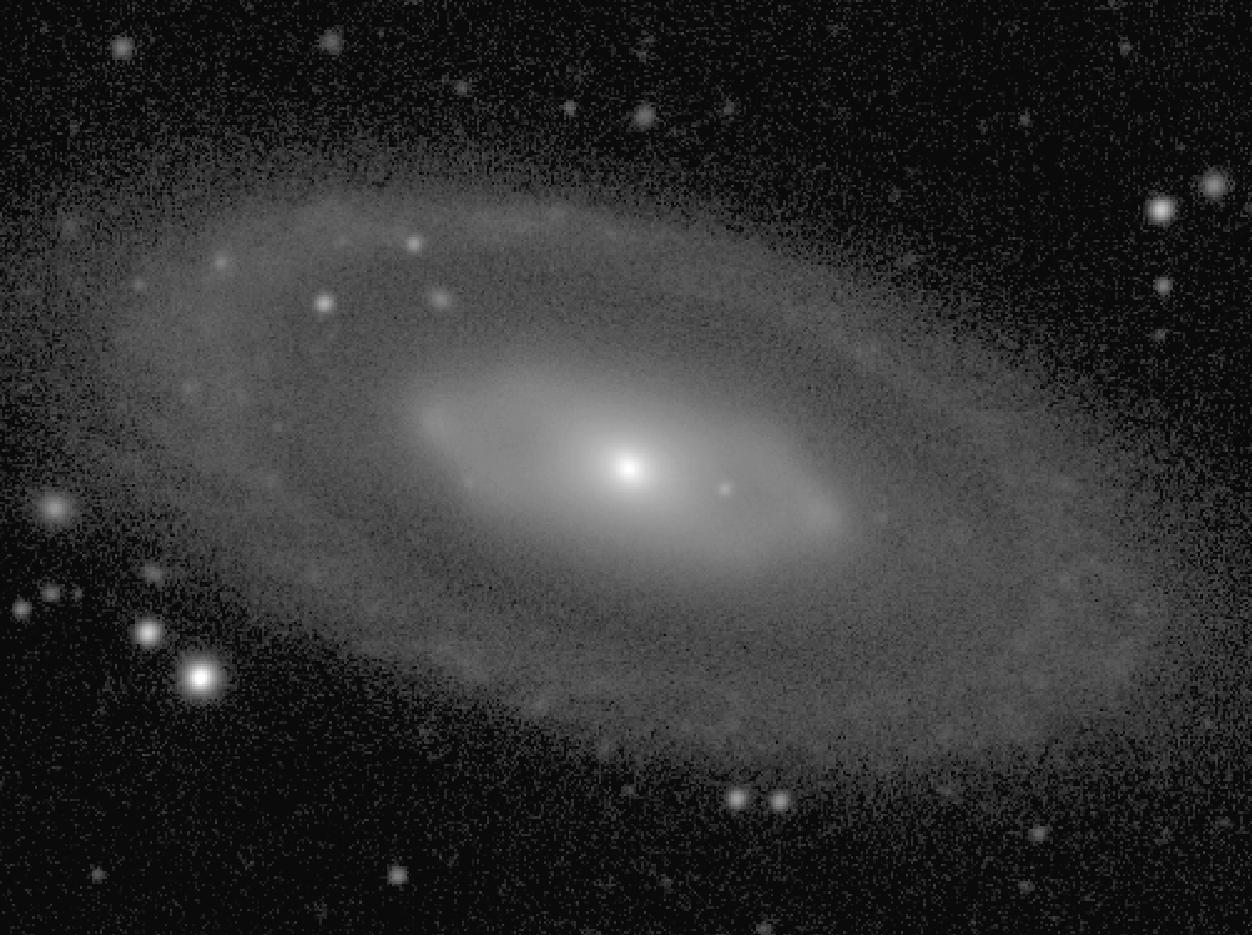

De Vaucouleurs Atlas Type: (R)SAB(r?)0/a
Filter: B
Telescope: CTIO 1.5-m
North right , East up
Field Dimensions: 3.6 x 2.7 arcminutes
RC3 Type: (R)SA(r)0+
RSA Type: RS02(5)/RSa
Surface Brightness Range Displayed: 17.5-26.5 mag per square arcsec
Absolute Blue Magnitude: -20.2
De Vaucouleurs Atlas Description:
As an outer-ringed galaxy, NGC 7020 is one of the best in the sky. The feature is completely detached and morphologically is dominated by numerous flocculent spiral features. In a color index map (Buta 1990b), the ring is knotty and blue, and is the main region where recent star formation is occurring in NGC 7020 . The ring also includes faint HII regions (Crocker, Baugus, and Buta 1996). The knotty, flocculent spiral appearance of the ring is our main reason for classifying the galaxy as type S0/a.
The classification gets more complicated when we focus on the bright inner zone in the galaxy. This zone is defined by boxy and hexagonal isophote shapes, and the subtle impression of an ``X" crossing the central region. At the ends of the major axis of the hexagonal zone, two bright spots are found. In the color index map, these spots show no color contrast and hence must be stellar dynamical phenomena. Between these spots and the inner boxy zone, the light distribution is slightly depressed.
This zone, interpreted by de Vaucouleurs as an inner ring , strongly resembles several edge-on galaxies known to be presenting edge-on views of bars. Patsis, Skokos, and Athanassoula (2003) interpret a hexagonal inner ring in terms of a specific family of stable three-dimensional periodic orbits . The appearance also resembles models of ``box/peanut" bulges. The main difficulty with this interpretation is that the feature is imbedded in a clear disk that is not edge-on, but inclined by 69o. In the classification, we have interpreted the inner zone as some kind of bar because of the spots, which are like ansae . Buta (1990b) deprojected the galaxy, and showed that the inner feature becomes simply a broader hexagonal zone. However, if the feature is three-dimensional, then its face-on appearance is indeterminate. Because of this difficulty, we cannot assign the galaxy a reliable variety.